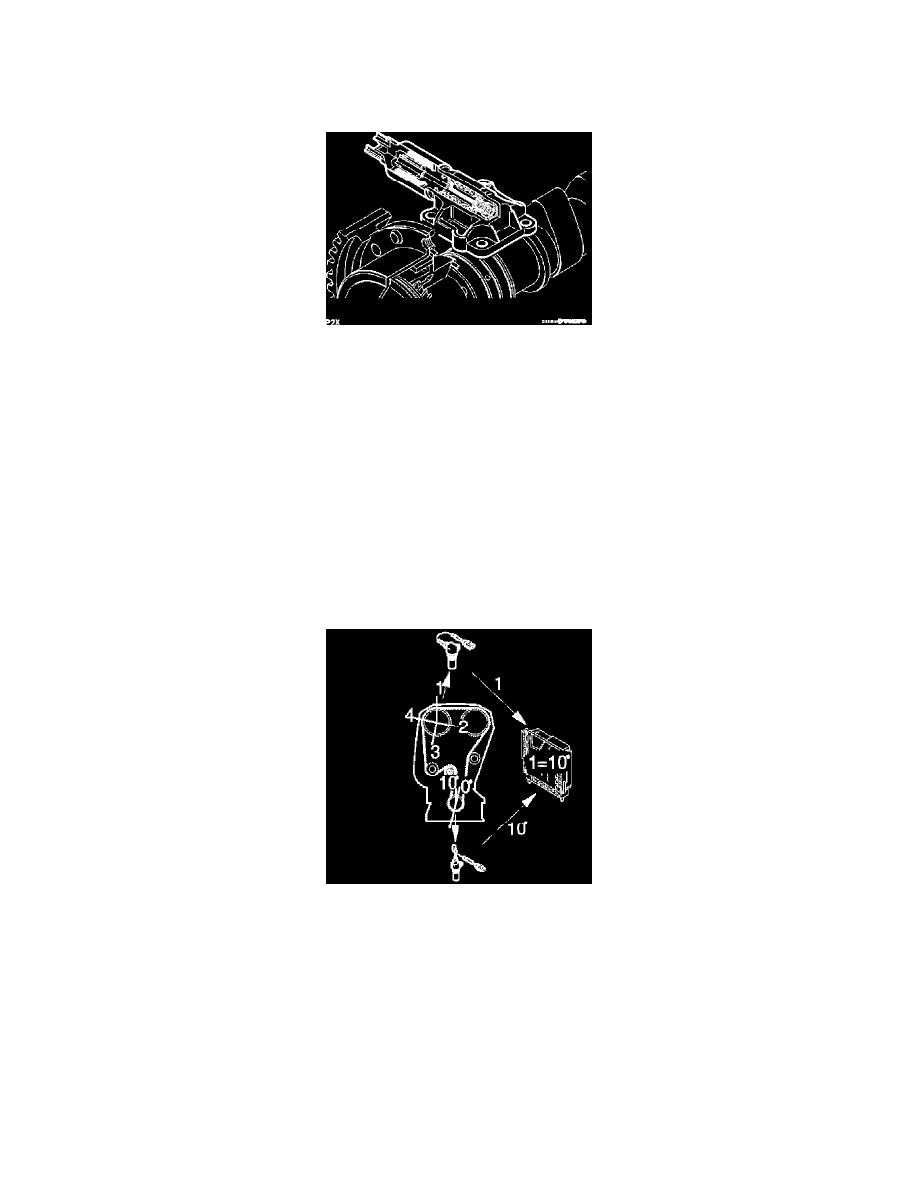V70 2.5T L5-2.5L Turbo VIN 59 B5254T2 (2006)

Variable Valve Timing Actuator: Description and Operation
Camshaft Control (CVVT)
Camshaft Control (CVVT)
When the camshaft is set at the factory, it is aligned with the position of the crankshaft. The position of the camshaft in relation to the crankshaft is
designated the camshaft 0 position.
During camshaft control (CVVT) the camshaft 0 position is offset. The value of the 0 position offset is called the cam timing. The cam timing is 0
degrees if the camshaft is not being controlled.
By controlling the cam timing (the camshaft is deployed from its 0 position) the performance of the engine is increased, the idle speed quality is
improved and the emissions are reduced.
In order to detect the cam timing, the engine control module (ECM) uses the signals from the engine speed (RPM) sensor (the position of the crankshaft)
and from the camshaft position (CMP) sensor (the position of the camshaft). By comparing these two signals, the control module is able to determine the
cam timing (the number of degrees the camshaft is from its 0 position).
There are diagnostic for this function. See also Camshaft diagnostics (CVVT).
Camshaft cam timing
The camshaft (A) is divided into four flanks per revolution of the camshaft (flanks 1-4). The angle between flanks 1-2 = 103 degrees, flanks 2-3 = 90
degrees, flanks 3-4 = 90 degrees and flanks 4-1 = 77 degrees. The angle between the flanks is different, allowing the control module to determine which
flank it is detecting and therefore determine which combustion cycle the cylinders are in.
The crankshaft has four reference positions, one for each camshaft flank. The camshaft turns at half the speed of the crankshaft. This means that two
reference positions are detected for each turn of the crankshaft. Therefore two engine revolutions are required to detect all flanks on the camshaft. For
example (may vary between different engine variants): flank 1 at 0 degrees, flank 2 at 206 degrees, flank 3 at 386 degrees and flank 4 at 576 degrees
(flanks 3 and 4 are detected during the second engine revolution).
The reference positions of the crankshaft coincide exactly with each camshaft flank if the camshaft cam timing is 0 degrees. If the cam timing deviates
from 0 degrees, i.e. the flanks deviate from the reference positions of the crankshaft, the control module calculates the number of crankshaft degrees by
which the flank is deviating.
The control module detects the reference positions for the camshaft flanks using the signal from the engine speed (RPM) sensor.
